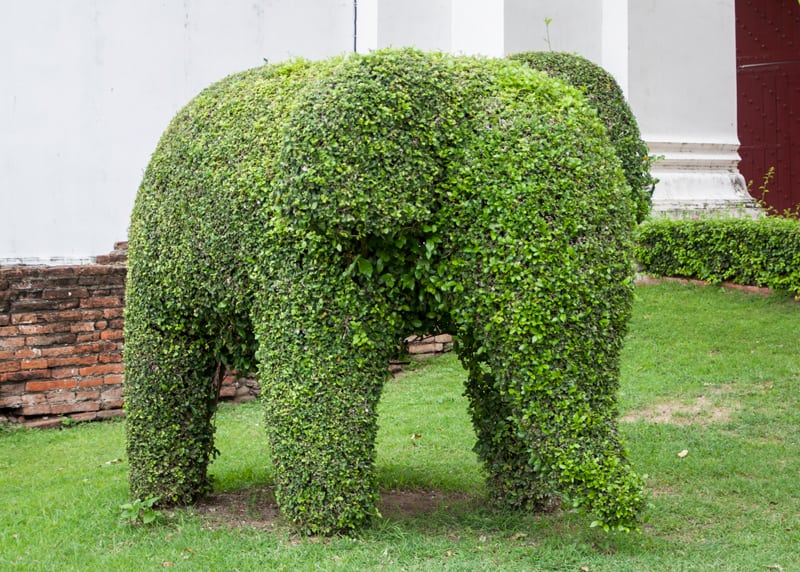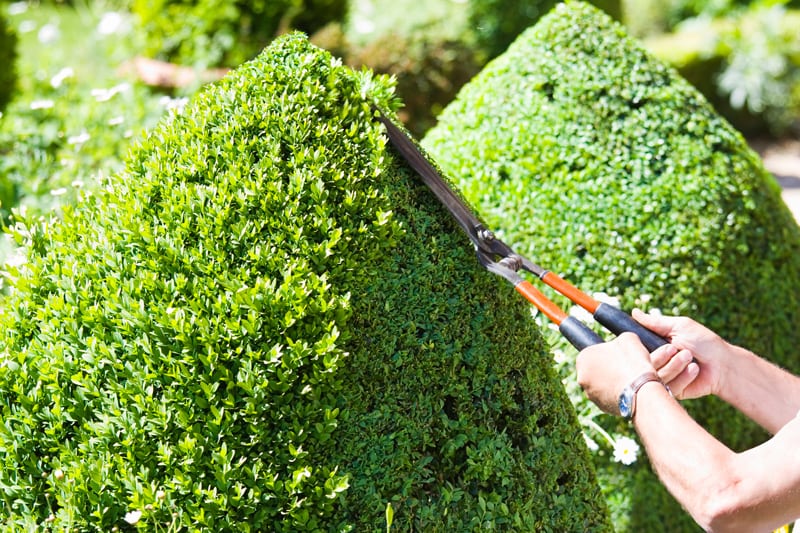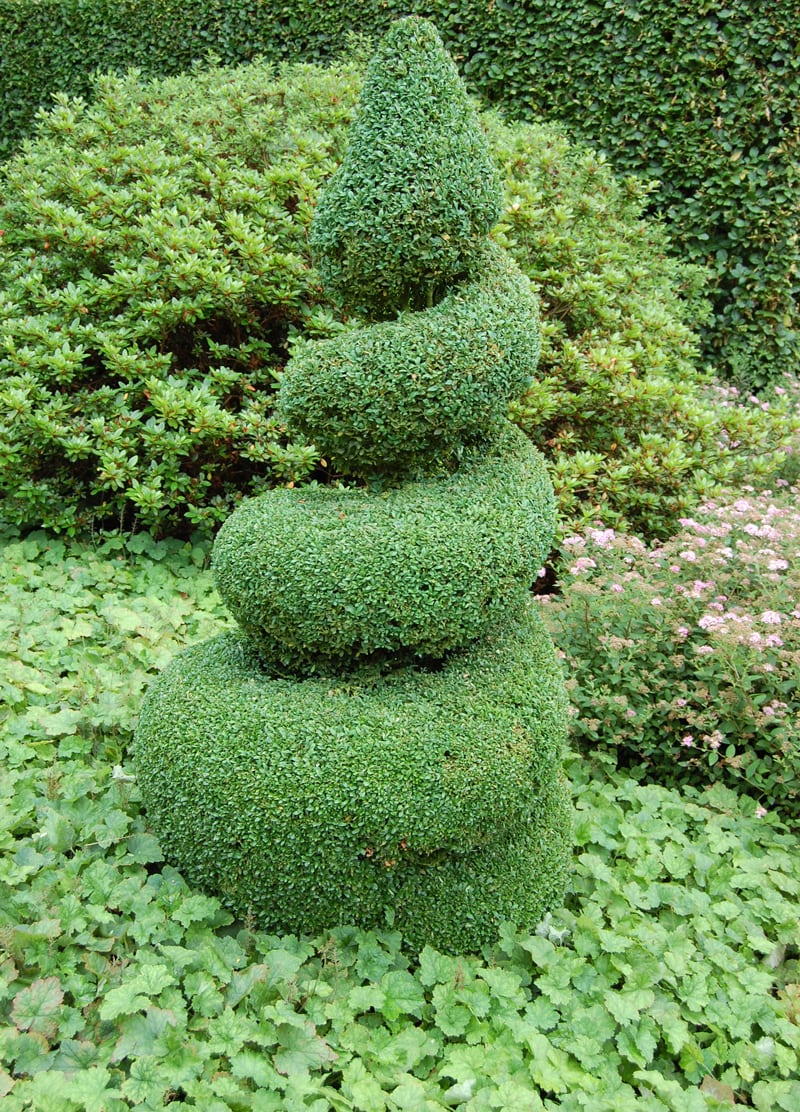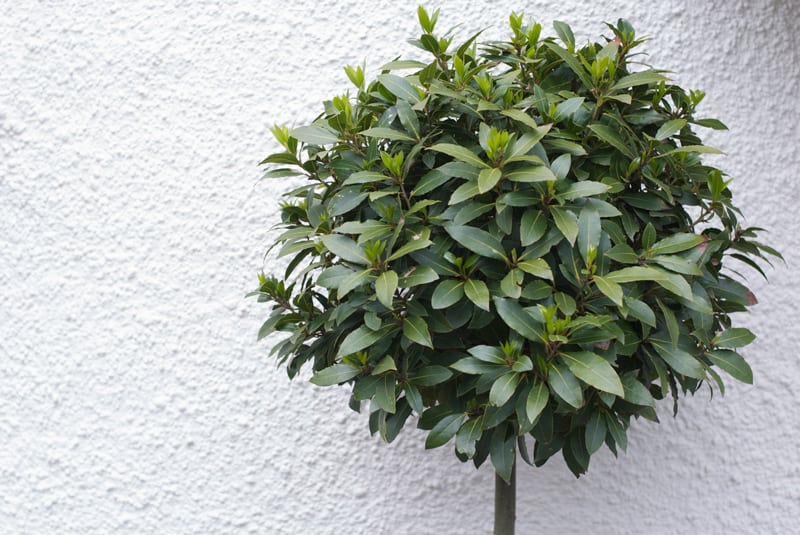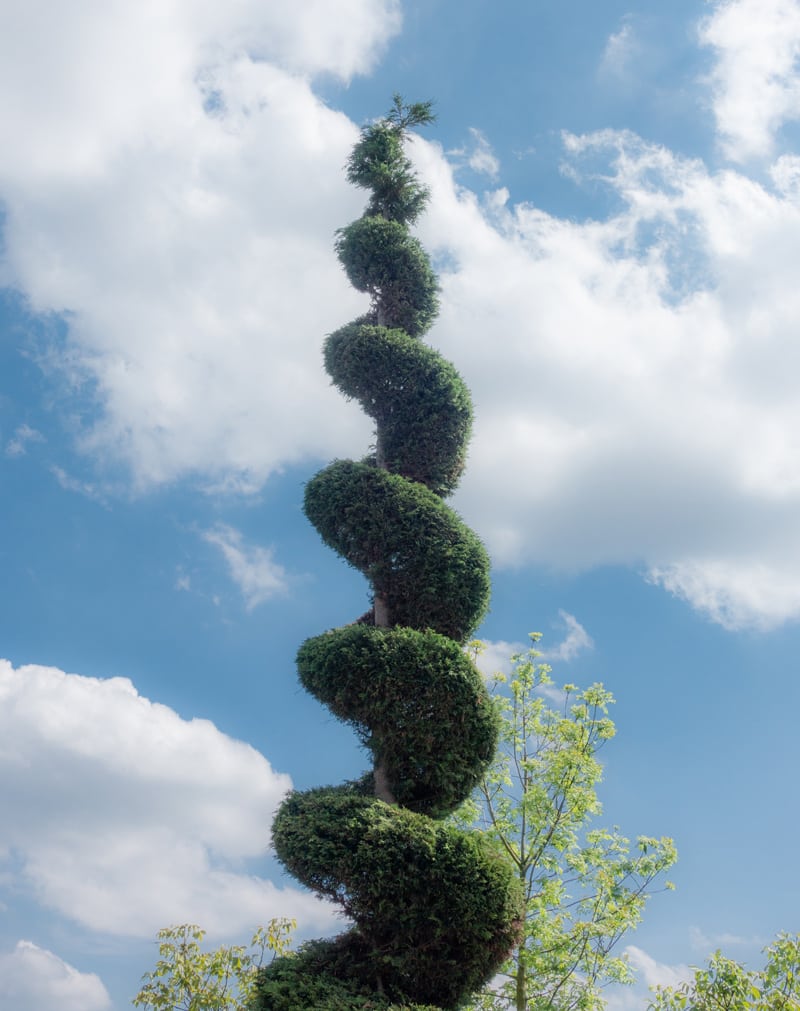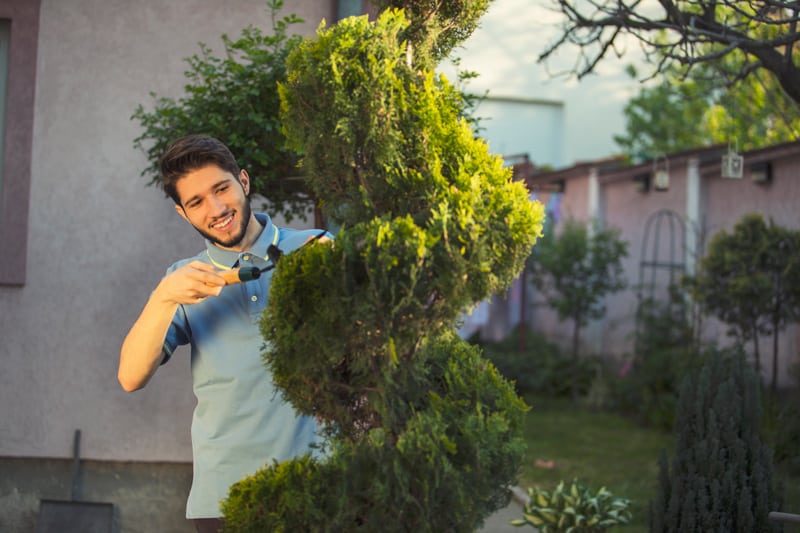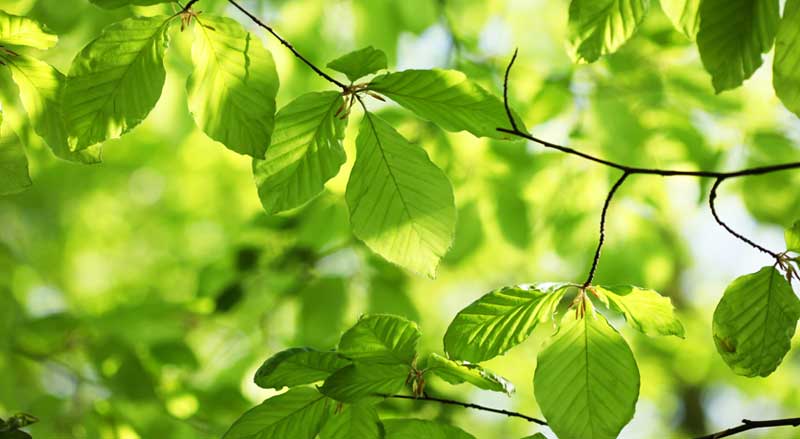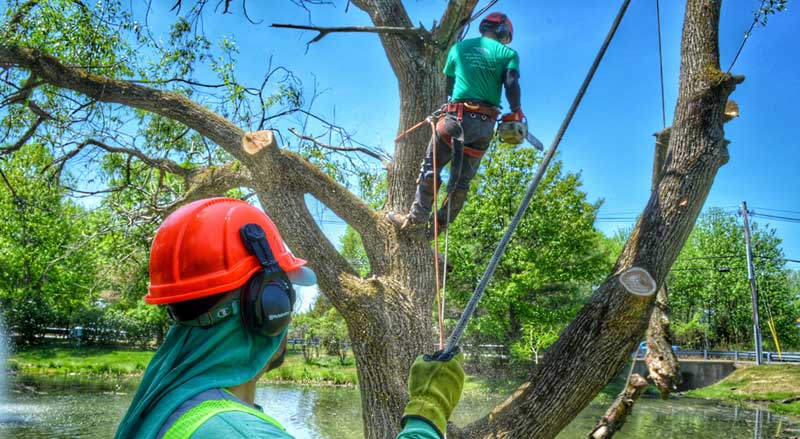Whether you want privacy or an awe inspiring focal point in your landscape, a living sculpture design can provide an intriguing alternative to customary fences and fountains.
Living sculptures can be functional or ornamental in design. They can take on the shape of something specific such as an animal or they can be more geometric in form.
Whichever way you decide to go, living sculptures will provide a fresh and trending take on “going green”.
Why Use Trees as Sculptures in Your Yard?
When correctly done, tree sculptures provide alluring and living ambiance to an outdoor environment.
The art of shaping trees into ornamental objects is known as Topiary. According to Britannica “Topiary is said to have been invented by a friend of the ancient Roman emperor Augustus and is known to have been practiced in the 1st century CE.”
Although topiary is a long-standing tradition, topiary sculptures are considered ephemeral paintings. They allow the artist to render multiple visions with a single tree providing a living way to dynamically alter the space.
These sculptures can offer privacy to make your outdoor living space intimate and adorn your home with beautiful branch blooms.
What Types of Evergreen are Best for Sculpting?
Tree sculpting is done with a variety of tree types. Some of the best evergreens to use include box, cypress, and yew. However, evergreen species such as rosemary, holly, and box honeysuckle are used with great success.
Choosing the right type of evergreen for your space, depends on a variety of factors:
Location
Depending on where you would like the sculpture, you may need to consider a potted evergreen. They can be used on a deck, patio, or entryway to your home. Your evergreen sculpture will also need the right amount of water and sunlight. These factors will help you choose which variety of plant is best for your space.
Size
Evergreens come in a variety of sizes and foliage density. Boxwood evergreens tend to be the most preferred because of their growth habit and leaf size.
While hollies, yews, arborvitae, and Alberta spruce make good choices for taller tree designs that create more privacy.
How to Maintain Your Living Sculpture Design
Once the sculpture is installed, regular maintenance is key to the tree’s health and the overall effect on the chosen area. Depending on the type of tree selected, the requirements and vulnerabilities may vary. However, clipping, watering, and protection from the elements are essential to maintaining your plant.
To support the shape of the topiary, use the appropriate tools to match the size of the plant. Using a small tool on a large evergreen will take twice as long as it should and vice versa.
Your evergreen sculpture will require annual trimming to retain the design’s shape and appealing look. Spring is the best time to prune and trim your topiary as you shouldn’t clip outdoor plants in extremely cold or hot weather.
Whether you are using your living sculpture to create privacy or a dynamic focal point in your landscape, we hope that this article provided you with some artistic ways to utilize evergreens in your yard.
Please feel free to contact us with any questions you may have about plant variety, placement, and pruning or trimming services.

